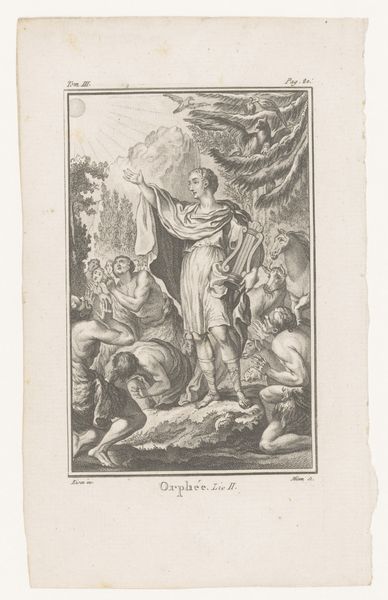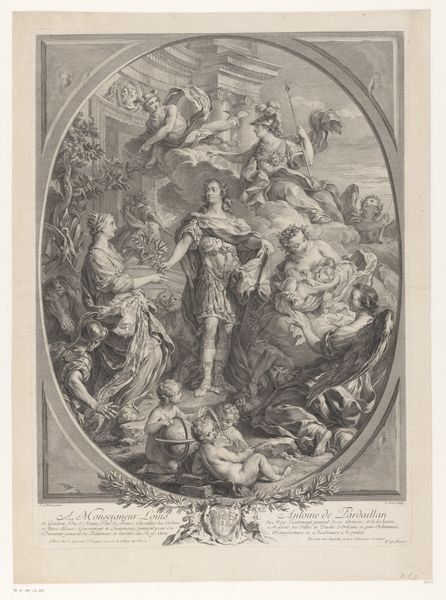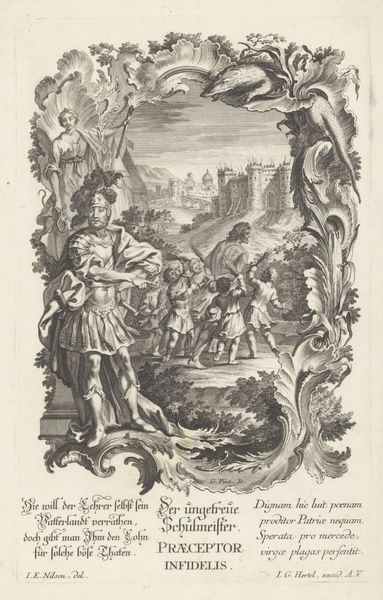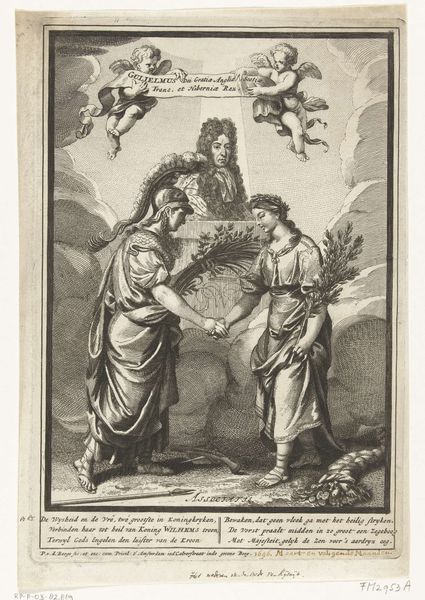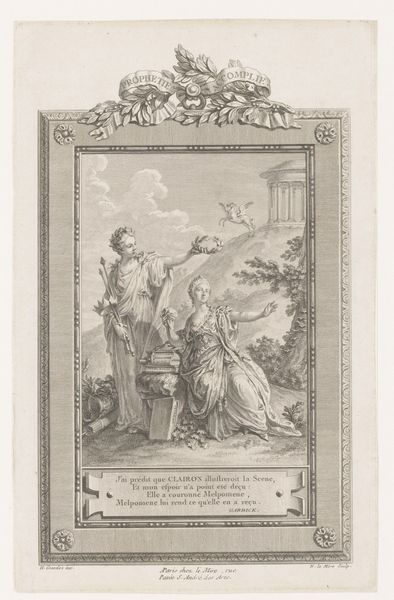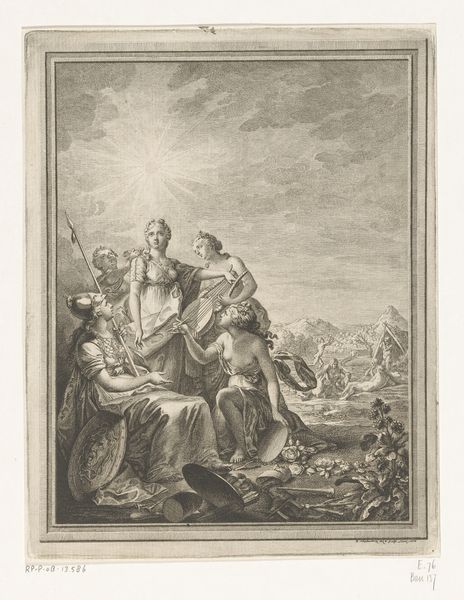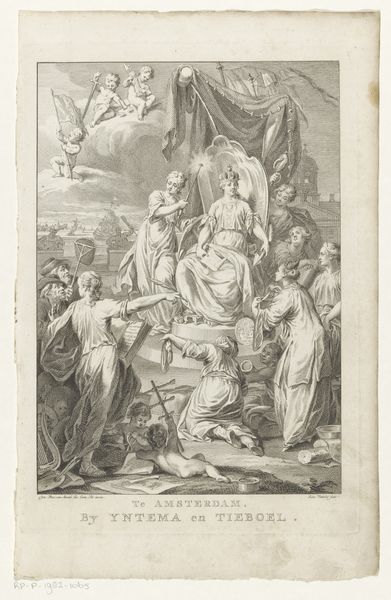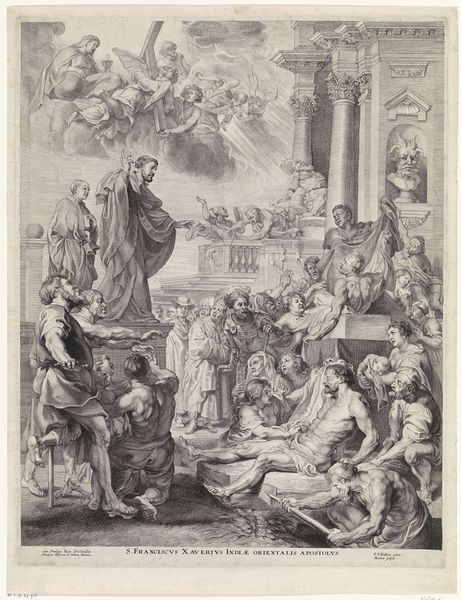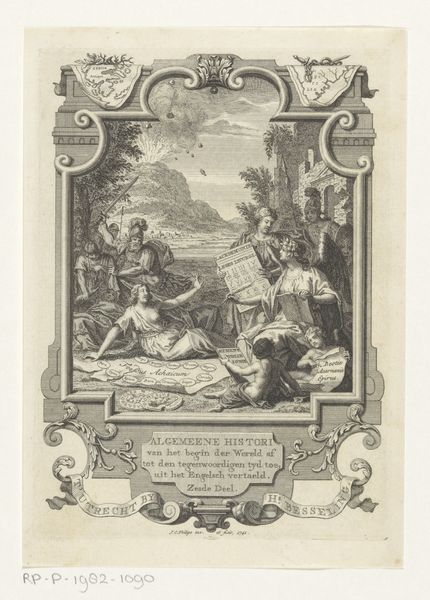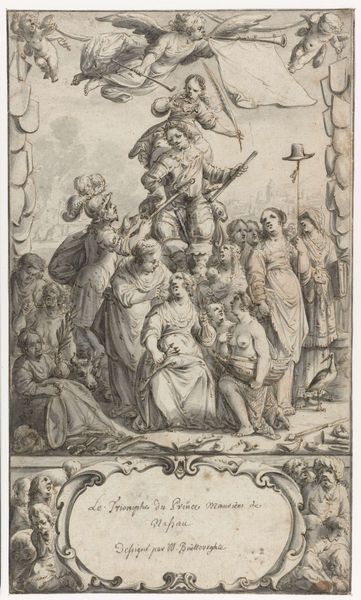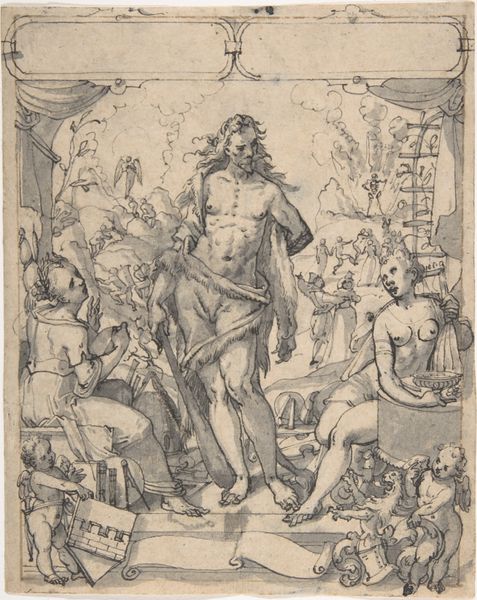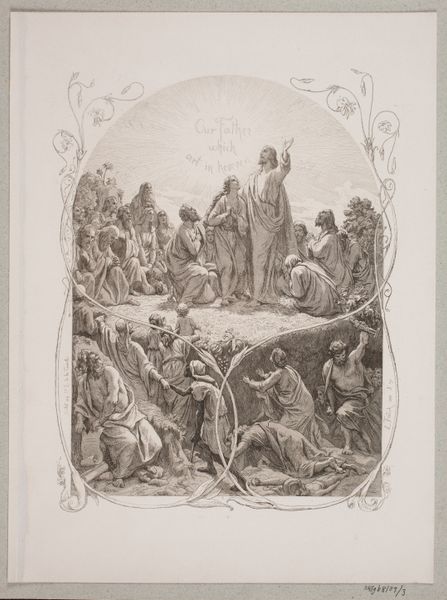
Illustration nr. 6 til "Visen om Dronning Dagmars ankomst til Danmark" 1863
0:00
0:00
drawing, print, pencil, engraving
#
pencil drawn
#
drawing
#
narrative-art
# print
#
figuration
#
pencil drawing
#
pencil
#
line
#
history-painting
#
engraving
Dimensions: 283 mm (height) x 226 mm (width) (bladmaal)
Editor: This is Lorenz Frølich's "Illustration nr. 6 til \"Visen om Dronning Dagmars ankomst til Danmark"", created in 1863 using pencil and engraving. It's a delicate drawing, quite intricate. What strikes me is the almost medieval storybook feel, contrasting with the clear skill involved in its production. How do you interpret this work? Curator: Considering this work from a materialist perspective, it becomes fascinating to consider the relationship between Frølich's labor, the materials he used - the pencil, the engraving tools, the paper - and the historical narrative being depicted. The choice of printmaking, for instance, democratizes the image, enabling wider distribution and consumption of this particular representation of Danish history. What social context do you think would cause someone to create this kind of nationalistic artwork? Editor: I guess in the mid-19th century there was a push towards solidifying a Danish national identity through its history? Perhaps by disseminating this artwork through printed copies, ordinary people would feel closer to their queen. Curator: Exactly. And we can think of "Illustration nr. 6" not only as an artistic creation but also as a commodity. Its purpose goes beyond pure aesthetics, reflecting how art becomes enmeshed with nationalist sentiment and political agendas. Notice also how the printmaking technique itself relates to broader trends in industrial production and consumption in 19th-century Europe. Are those details, framing the illustration, industrially manufactured ornaments? Editor: That’s fascinating, I hadn't considered how even the most seemingly "artistic" choices relate to the broader socio-economic context. Thank you. Curator: Indeed, thinking about the materials and means of production used to create and circulate an image like this, provides invaluable insight into the function of art within society at that moment.
Comments
No comments
Be the first to comment and join the conversation on the ultimate creative platform.

